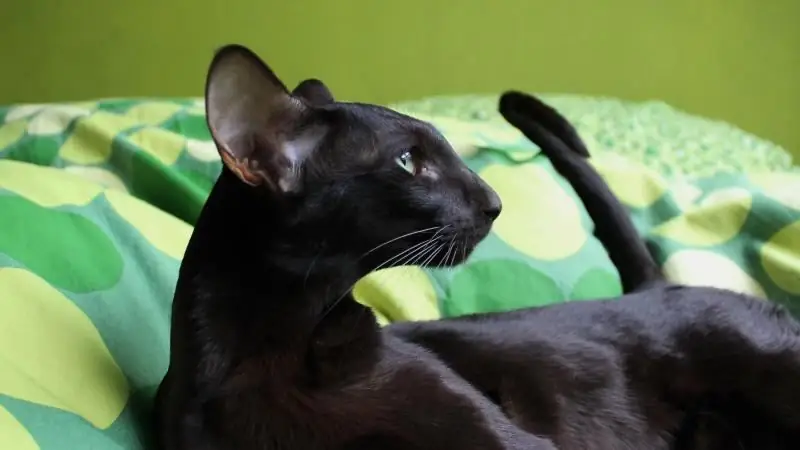
Table of contents:
- Author Bailey Albertson [email protected].
- Public 2024-01-17 22:26.
- Last modified 2025-01-23 12:41.
Orientals - cats that love to communicate
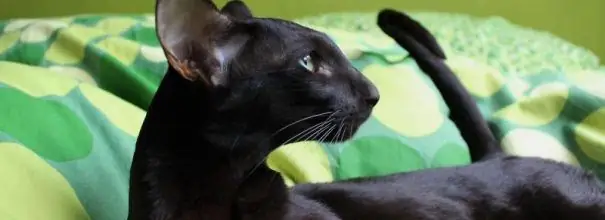
A slender body, thin long legs and a tail, a proud profile, large, like a bat, ears - this is what an oriental cat looks like. Orientalists are also active and athletic, talkative and curious, friendly and very attached to their people.
Content
- 1 History of the oriental cat
-
2 Breed standard
- 2.1 Table: Oriental breed standards
- 2.2 Table: main colors of oriental cats
- 2.3 Photo gallery: colors of oriental cats
- 3 Character traits
- 4 How to choose a kitten
-
5 How to care for an oriental cat
5.1 Feeding Orientals
- 6 Breeding oriental cats
- 7 Diseases of the Oriental
- 8 Reviews
History of the oriental cat
Sometimes orientals are called colored Siamese, but this is not entirely true, although the two breeds developed in parallel. In the genes of oriental cats, not only Siamese were noted, but also Abyssinians, Russian blue, European shorthair and domus (ordinary domestic mongrel cats) of thin-boned constitution.
This is a fairly young breed, officially recognized since 1958. Moreover, at first, only the walnut-chestnut color was adopted, and the breed, respectively, was called "foreign chestnut-brown", then white cats appeared on the stage (foreign white, or foreign white), other colors began to catch up, each of which was registered as an independent breed with its own name. And only in 1991 it was decided to combine them into one, while the word “foreign” disappeared from the name, and “oriental” (eastern) appeared. In 1995, individuals with the addition of white were recognized.

Chestnut Orientals were recognized as the first
In general, the emergence of the breed of oriental cats is associated with a sad page in history - the Second World War. Before that, for the first time, colored Siamese cats (mother and son are completely dark brown with blue-green, not blue eyes) were presented in 1894 at an exhibition in England. Naturally, they were rejected. Subsequent attempts to represent colored Siamese cats were also thwarted by vigilant experts. Siamese breeders were forced to hide the appearance of colored kittens in nurseries. After World War II, the number of Siamese cats declined significantly, and during the recovery period, the color variety was remembered. Now these kittens were not culled, and were also allowed to breed.
The popularity of orientals grew by leaps and bounds, today these cats confidently take first places at the most prestigious exhibitions.
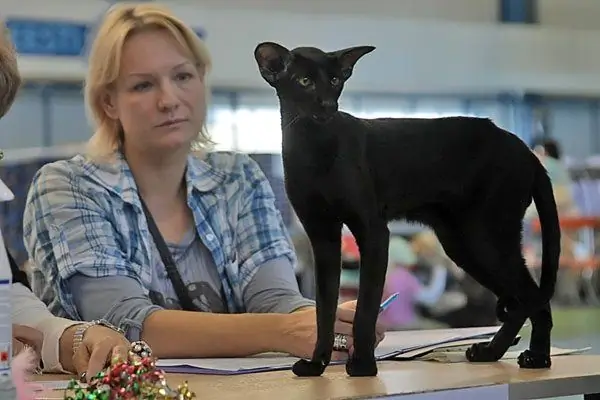
The number of orientals at exhibitions is growing every year
In Russia, love for oriental cats also grew gradually, starting from the last decade of the last century. The first Russian orientals were distinguished by their heavy bones, as they had a large proportion of the blood of Russian blue cats. The breed was significantly improved by the cat Casimir van Ordaf (Siam), exported from Holland. And since 2001, for a long time, the main producer was the cat Kaiser Isten Guest. Today oriental cats are one of the most successful breeds in Russian breeding, performing with triumph at international exhibitions.

Oriental white Kotka is a full-fledged member of the spacecraft crew in Olga Gromyko's series about cosmooluchs
Breed standard
The oriental cat is a graceful creature. A lean, muscular body with long, thin legs, the same tail, a triangular head with large ears, a proud posture - this is the general appearance of an orika.
Table: Oriental breed standards
| Head | In the shape of a long, pointed wedge, well proportioned to the body. The common wedge starts from the nose and continues in a straight line to the tips of the ears, forming a triangle without kinks on the pads of the whiskers. The eyes are spaced at a distance not less than the width of the eye. If the mustache (and beard in long-haired animals) is pulled back, the underlying bone structure is visible. Cheeks are allowed for breeding cats. |
| Skull | Flat. In profile, a long, straight line from the top of the head to the tip of the nose, without protruding eyes or arching on the nose. |
| Nose | Long and straight. Continues forehead without break. |
| Muzzle | Thin, wedge-shaped. |
| Chin and jaw | Medium size. The tip of the chin is in line with the tip of the nose in a vertical plane. Neither weak nor too massive. |
| Ears | Strikingly large, pointed, broad at the base, continuing the lines of the head wedge. |
| Eyes | Almond-shaped, medium in size. Neither convex nor recessed. Head and ears tilted harmoniously towards the nose along the wedge lines. No squint. |
| Eye color | Green. Point with white - blue. Point - blue. White and bicolor - blue, green and different colors. |
| Body | Long and flexible. A peculiar combination of thin bones and strong muscles. The shoulders and hips continue the lines of the elongated body. The hips are no wider than the shoulders. The belly is tight. Cats can be slightly larger than cats. |
| Neck | Long and flexible. |
| Paws | Long and thin. The hind feet are higher than the front ones. In good proportion to the body. |
| Feet | Graceful, small and oval. Toes: five on the front legs, four on the hind legs. |
| Tail | Long, thin at the base, tapering towards the tip. In the long-haired variant of the breed, the hair on the tail forms a kind of plume (plume). |
| Wool | The Oriental Shorthair has a short, fine texture, shiny or satin-like, close to the body. The Oriental Longhair is of medium length, thin, silky, without a fluffy undercoat, tight to the body, may appear shorter than it actually is. The hair is longer on the tail. |
As already mentioned, the orik colors are striking in their variety and combination.
Table: main colors of oriental cats
| Solid | The color of the coat must be uniform throughout the hair and the same from the nose to the tip of the tail. |
| Shaded | White, ivory to pale honey or apricot undercoat, with a touch of colored tipping on the lower body. Muzzle and tail from dark on the back to a color matching the undercoat on the chin, underside of the chest and under the tail. |
| Smoky | In a calm state, the color appears to be solid. The color is clearly visible in movement. The limbs are solid color, with a narrow strip of white at the base of the hair, visible only when the hair is pulled apart. |
| Multicolor | Solid color cats with spots of red or areas that smoothly turn into red on the body and limbs (several shades of red are allowed, in diluted colors instead of red - cream color). |
| Bicolor | The color must conform to the standard of the appropriate pattern with the addition of white feet, legs, underside of the torso, chin and muzzle, including a clear inverted V on the face. |
| Tabby | The quality of the drawing is important: it must correspond to the description of the corresponding type of tabby and be clearly traced. The color must be clearly visible when the cat is in a natural standing position. |
| Point | Body: Light shading is acceptable, but clear color is preferred. Dark shades are allowed in older cats (as pointed oriental cats usually darken with age), while maintaining a significant contrast between the color of the point's coat and body. Points: The mask, ears, feet, legs and tail are rich in color and well defined. All point areas are of the same tone. The mask covers the entire face, including the mustache pads, and is traceable to the ears. The mask should not extend beyond the top of the head. Points should not have white hair. |
Most of all, according to statistics, are popular oriki tabby. In second place are bicolor ones, the least popular, however, as in other breeds, are pure black animals, although there are fans of this particular color of cats, and black orientals are most similar to their large wild relatives - panthers.
Photo gallery: colors of oriental cats
-

Oriental white - White orientals look very aristocratic
-

Oriental marble - Marble oriental cats are very beautiful
-

Lilac spotted oric - When spotted, the spots should be clearly marked
-

Chocolate Oric - The most difficult thing in oriental cats is to achieve a stable solid color.
-

Different eyes of a white oriental - White and bicolor orientals can have different eye colors
-

Tortoiseshell oriental - Oriental cats also have a tortoiseshell color
-

Black oriental - Oriental solid black cats are very similar to panthers
Character traits
Orientals are great companions. They are very attached to their people and try to take part in all household chores. Until old age, they retain restlessness, curiosity and liveliness of character.
Breeders always warn about the habit of chatting, but not everyone listens, and then the following situation turns out: “Ah-ah, I like the appearance of such a cat so much, but it's absolutely impossible to live with it. She wants something all the time. She screams all the time and demands that attention be paid to her. I can not take it anymore! Take someone away !!! So before you get yourself an orika, think about whether you agree and whether you have enough time to have constant conversations with your cat.
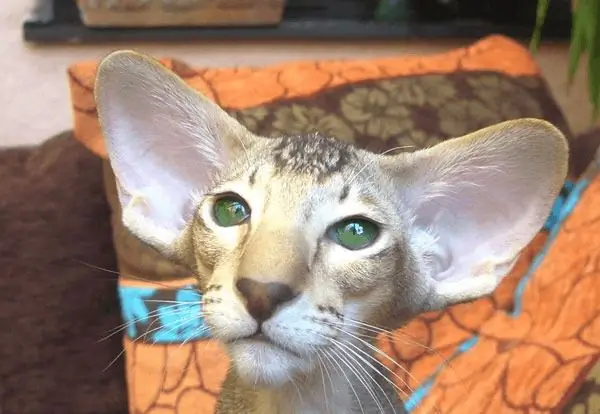
Orici constantly want to communicate with their person
Tactile contact with a person is also very important for orikam. Therefore, in every convenient case (and inconvenient too) they try to climb it. A cat walking by itself is not about Oriental - where you are, there is a cat. Watching TV, working at the computer, cooking (especially interesting), cleaning the apartment - you can't do anything without your pet.
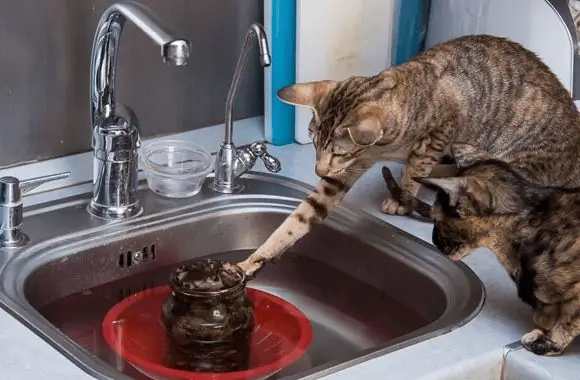
Orientals are very curious and want to participate in all household chores
Orykos are very mobile and love to jump on the tops, so it would be good for them to organize special play complexes, which, by the way, can be placed even in a small apartment. Orientals also like to play the dog game "bring an object", and they do it with pleasure and for a long time. And they are very easily accustomed to a harness with a leash, so you can safely go for a walk.
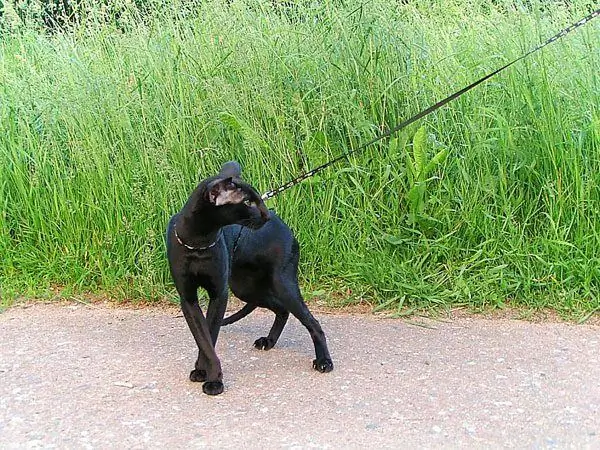
Oriental cats easily get used to the leash, so you can walk with them
Orientals can also live in a private house with free range. But do not hope that if the cat has enough opportunity to entertain himself in the fresh air, then he will need less games with you. This breed is very much in need of human communication, so you still have to devote a lot of time to your pet.
How to choose a kitten
If you want to buy a real oriental with good genetics, then you need to contact only trusted breeders. Take the time to study the information about them in detail - all information is open and accessible from conscientious breeders.
A good breeder provides information about kittens that are intended for sale, from the first not even days, but hours of life. Since kittens in catteries usually grow up to three or four months, if you want, they will send you materials about your chosen baby (photos, videos, stories). A kitten gets into your hands fully vaccinated and socialized, that is, accustomed to a tray, a scratching post, to communicate with people. In some catteries, kittens are sterilized.
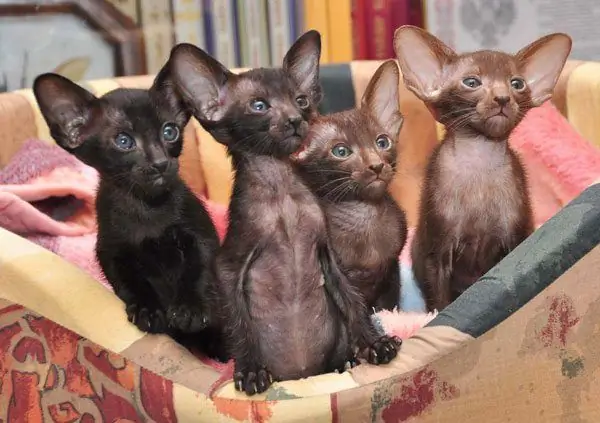
The choice of a kitten must be approached very responsibly
You can just buy a kitten and pick him up right away, or you can reserve the baby and watch his growth, and when he is ready, take him home. In any case, a contract is drawn up, and when making a reservation, half of the amount is paid. It should be borne in mind that if you refuse the reserve, then the money will not be returned to you. The necessary documents are required - a metric, a veterinary passport.
By the way, if you are against clipping claws, you should warn the breeder about this so that your kitten does not spoil them, as this mod requires early training of animals to this procedure
If you buy a kitten from a random person, be prepared for the fact that it may turn out to be an "animal that looks like an oriental cat." No one can guarantee you the purity of the breed and health. In this case, it is better for you to immediately contact the veterinarian so that he examined the kitten and gave him the necessary vaccinations.
A thoroughbred animal is expensive: for example, the price of oriental kittens varies from 30 to 70 thousand rubles. But there are some possibilities to reduce these amounts. For example, pet-class kittens are cheaper. Sometimes kittens are sold on co-ownership, which also reduces the price, but you undertake to participate in the breeding work of the cattery. For breeding, cats and cats are used up to a maximum of eight years of age (by normal breeders who think not only about profit, but also about the health of their animals), then they are sent "retired" and usually try to put them in good hands, naturally, the cost of such an animal will be far less.
How to care for an oriental cat
Orientals do not require much maintenance. Their coat is short and without undercoat, and the awn is tender. Therefore, it is better to use a special glove to take care of it, the furminator is not needed here, since it is needed to remove the undercoat. Combing with a glove is enough to be done once a week, and during the period of strong shedding - twice. By the way, due to the lack of undercoat, oriki are quite freezing, so protect them from drafts, and in the cold season, do not leave them outside for a long time (unless, of course, they have free range).
It is possible to bathe orientals, but rarely - if very necessary. If suddenly your cat loves playing with water, do not hinder him, just make sure that he does not catch a cold.
Oryk ears are not difficult to care for either - they are large and not overgrown with hair. Inspect them regularly and clean as needed.
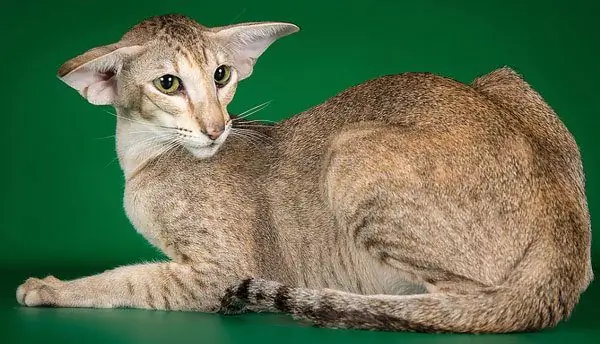
Oriental ears are very expressive and can convey a lot of emotions, and caring for them is simple.
The toilet for the animal is selected taking into account its preferences. So, it can be open and closed, but necessarily suitable in size - the cat must be freely placed in it and be able to turn around. Although veterinarians are more advised to use wood litter, and cats like it, you can use any other. Try different ones and watch your cat, choose what he prefers.
Feeding Orientals
Despite their outward thinness, oriki are good eaters and tend to overeat. Moreover, they recover in a very original way - the sides are thin, and fat deposits grow on the stomach, getting rid of which is quite problematic. Therefore, be sure to control the weight of your pet by weighing it periodically.
The weight of cats varies from 3.5 to 7 kg, and of cats - from 2.5 to 5 kg (of course, depending on the size of the animal). If anything - immediately put on a diet and do not give in to the appearance of "the cat is on its last legs, the cat must eat urgently."
You can feed your cats natural food, dry or wet food. When choosing food, be guided by the preferences of the animal, but do not follow his lead, since your cat must eat right after all. In no case give anything spicy, smoked and sweet, fatty (including fish, sour cream, cream, butter), beef kidneys, egg whites, potatoes, legumes, tubular chicken and fish bones.
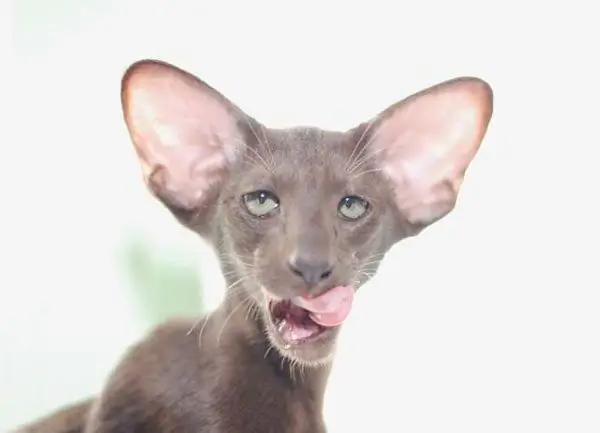
Do not trust the unhappy and hungry look of the cat, do not overfeed it
If you are a supporter of natural food, then feed the oriks like this:
- you can give any meat (lean pork and chicken only boiled);
- from vegetables, pumpkin, beets, zucchini, broccoli are preferred (although it all depends on the preferences of the cat - someone is crazy about tomatoes, others are crazy about cucumbers, etc.);
- cook porridge from rice and millet;
- fish to give marine low-fat and only boiled;
- from dairy products - low-fat kefir, fermented baked milk, natural yogurt and once a week - cottage cheese (real, from the bazaar, shop pseudo-work with palm oil is not allowed!);
- can be pork and beef cartilage.
Finished food should be of high quality, by the way, an independent review and rating of cat food can be found here. Orientals are usually fed two to three times a day. Please refer to the recommendations given on the food packaging.
Be sure to grow cat weed and feed your pets. This helps them to clear their stomach and intestines.
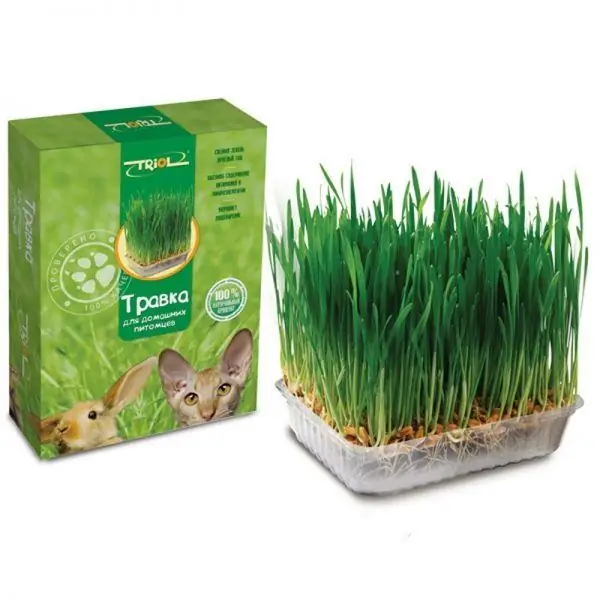
Grass for cats can help clear the stomach and intestines
Breeding oriental cats
Breeding thoroughbred animals should be taken very seriously. If you want to do this, you should register and obtain the necessary documents. Also, your pets must belong to breeds, shows or top show classes. Particularly strict requirements are imposed on breeding cats - even cats of a breed class are not allowed for breeding. You may not found your own nursery, it is enough to take the animal in co-ownership.
There are no fundamental differences in mating and pregnancy in oriental cats. Cats also reach sexual maturity at the age of five to nine months, and males a little later. But the first mating is best done when the animal is fully formed - at the age of one and a half to two years. It is better to knit cats for about two years too, and at first not more often than once a month. A cat in the prime of its reproductive functions is able to knit up to twice a week. One litter per year is enough for a cat (although physiologically it can tolerate three). It is advisable to let animals into breeding, as already mentioned, up to eight years.
Oriental diseases
Orientals for the most part are quite healthy animals that do not have genetic diseases, with a fairly strong immunity. This is probably due to the fact that the oriental cat is quite young, and representatives of different breeds were noted in its genetics.
Still, there are several diseases that spoil the general picture of Oriental health. It:
- heart failure (cardiomyopathy);
- flat chest (breathing is difficult, the diaphragm is disturbed and the heart is compressed);
- retinal atrophy;
- amyloidosis of the liver (violation of protein metabolism);
- gingivitis.
Orics are also susceptible to colds and other diseases associated with hypothermia (for example, otitis media).
With proper care and quality nutrition, your oriental cat can live 15-18 years.
Reviews
Oriental cats are amazing creatures, it is impossible not to fall in love with them. But you should only start them if you can give them enough attention, as these cats absolutely cannot stand being alone. Orik can be a true friend. This is, one might say, a cat and a dog in one bottle.
Recommended:
Russian Blue Cat: Description Of The Breed, Photos, Features Of Care And Maintenance, Breeding Cats, Choosing A Kitten, Owner Reviews
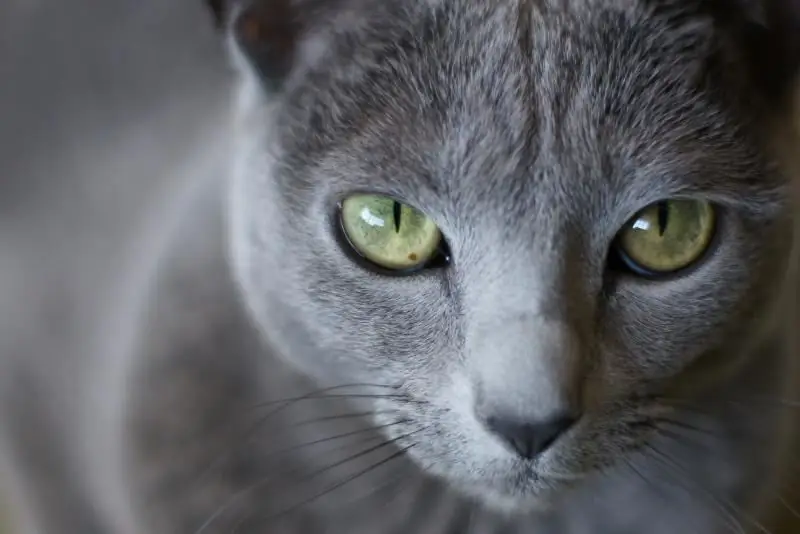
Everything you need to know about the Russian blue cat: the history of the formation of the breed, characteristics, behavioral features, rules for the care and breeding of animals
Bombay Cat: Cat Photo, Price, Breed Character, External Standards, Breeding, Kitten Selection, Owner Reviews
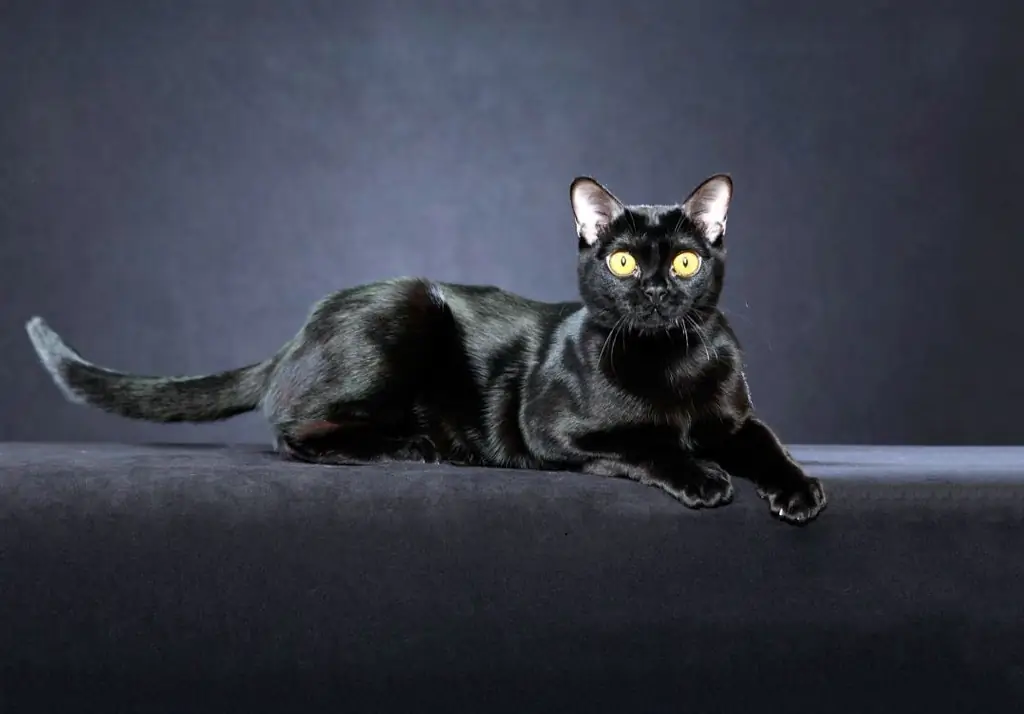
Where is the Bombay cat bred, what are the main external differences and character, how to properly care for it, feed it, how to choose a kitten of this breed
Anatolian Cat: Features Of The Breed's Appearance, Care And Maintenance Of The Cat, Character And Habits, Breeding Pets, Owner Reviews
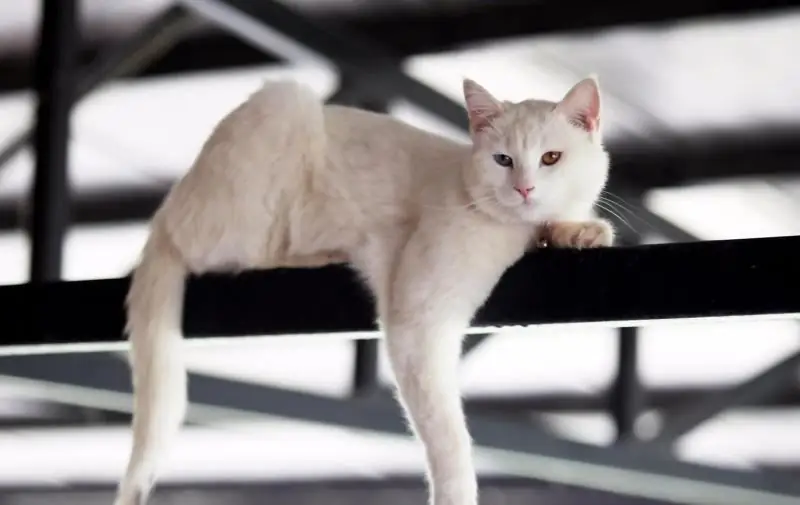
Where the Anatolian breed is bred. The main external differences, the nature of the pet. How to properly care for him, feed him. How to choose a kitten. Breeding. Reviews
Selkirk Rex: Breed Description, Care And Maintenance, Photos, Breeding Cats, Choosing A Kitten, Owner Reviews
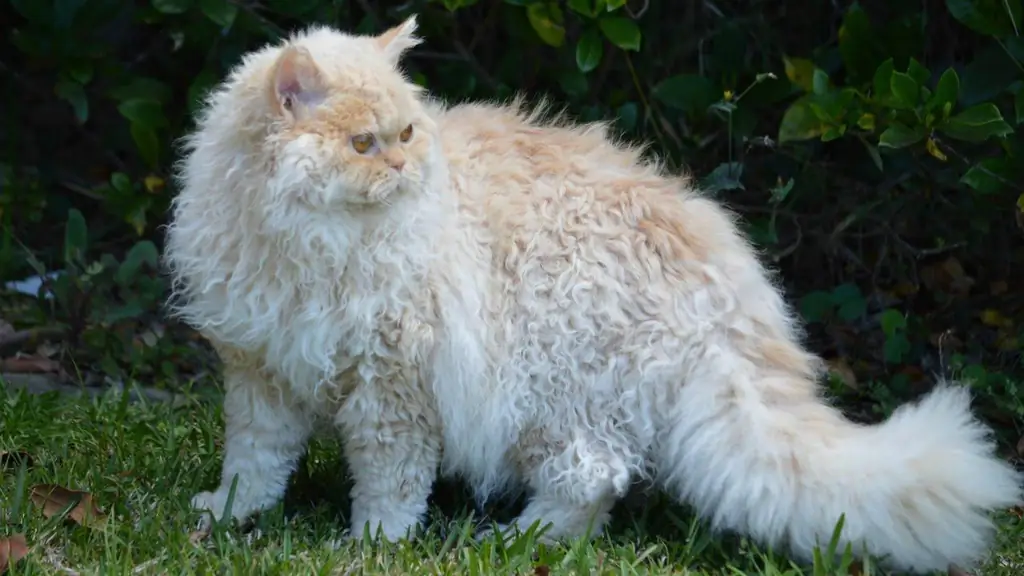
Where the Selkirk Rex breed was bred, its external differences and character. How to properly care for these cats, feed and treat them. How to choose a kitten. Reviews
American Bobtail: Breed Description, Maintenance And Care, Breeding, Owner Reviews, Photos Of Cats
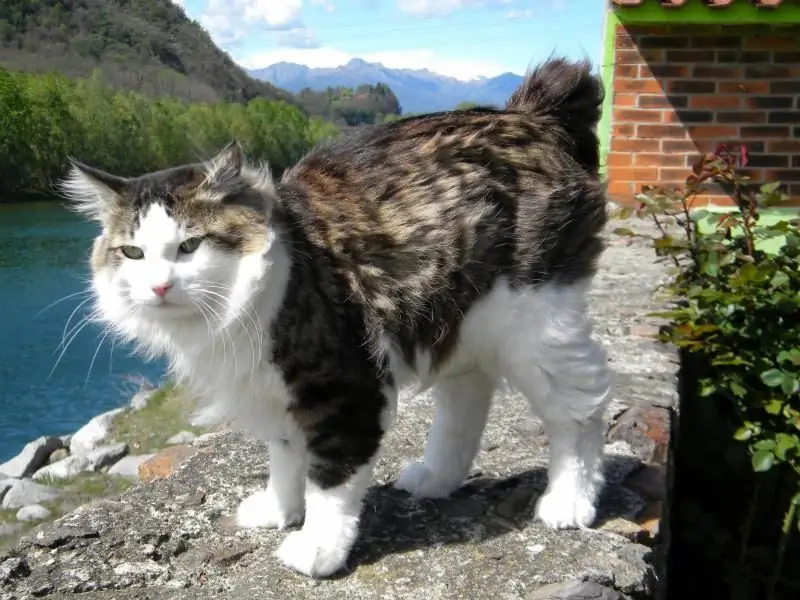
Where the American Bobtail breed was bred, its main differences. The nature of the breed. Proper care, feeding. How to choose a kitten. Reviews of the breed
